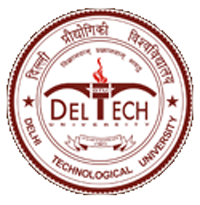Please use this identifier to cite or link to this item:
http://dspace.dtu.ac.in:8080/jspui/handle/repository/22098| Title: | Characterization of photonic crystal fibers and metamaterials theory and experiments |
| Authors: | Kishor, Kamal |
| Keywords: | Characterization Photonic crystal fibers Metamaterials Light confinement Transmission parameters Optical technologies |
| Issue Date: | 2015 |
| Abstract: | Recent developments in optical technologies are being shifted towards nano-scale devices of sub-wavelength dimensions. In these emerging technologies photons are being manipulated and controlled using devices having unit cells with a dimension in wavelength range or even with a dimension smaller than wavelength. Photonic crystal and Metamaterials are the prime focus area of research in photonics in the past few years with the number of publications and patents increasing exponentially. Photonic crystals are patterned materials with a well defined periodicity in dielectric constant. Photonic Crystal Fibers (PCFs) are one of the most important applications of photonic crystal materials. PCF is an optical fibers made up of single material with an arrangement of periodic air holes across the cross-section running down its entire length. PCF has the ability to confine light with the confinement characteristics, not possible in conventional optical fiber due to its high degree of design flexibility. Metamaterials are the specially designed structures having negative permittivity and permeability simultaneously at the same operating frequency for which the electromagnetic wave shows anomalous behaviour, i.e. phase and group velocity would be in opposite direction. Metamaterials provide precise control over the flow of electromagnetic waves. It is now the critical phase of their development as they move fast from the realm of fundamental studies to the manufacturing of photonic devices and commercial deployment in optical communication network. For the extraction of optimum performance of any designed structure it is the important to characterize it in terms of its waveguiding, geometrical and transmission parameters. In this thesis first the characterization of Endlessly Single Mode (ESM) PCF from its Far Field intensity measurements has been explored. The characterization results are verified and supported with experimental as well as simulation results. From the experimental measurements of the far field intensity pattern, we obtained the transmission characteristics of ESM PCF in terms of V-number, effective refractive index of the cladding, radius of the core, numerical aperture, etc. The experimental values of the waveguiding and geometrical parameters are found to be in agreement with the simulation results obtained using Improved Effective Index Method (IEIM) and Scanning Electron Microscope (SEM) data. Further, characterization of a specially designed Polarization Maintaining (PM) PCF has explored using Far Field intensity distribution pattern. It is observed that the waveguiding and geometrical parameters obtained from the far field measurement of PM PCF match with the manufacturer/simulation/SEM data within the experimental limits. Thus, this characterization method provides a useful tool for online characterization of PM PCF. Next, a V-shaped SRR metamaterial has been fabricated and characterized. The fabricated structure has shown a unique property of angular-gap-dependent tuneable negative refractive index (NRI) characteristics. The unique property of this structure is that by varying the angular gap between its arms, the capacitance (C) for the structure can be changed, and hence there can be a great control over the NRI. It is experimentally and computationally investigated the interdependence of the capacitance (C) and inductance (L) of the structure, and it is observed that by changing the angular gap of V-shaped SRRs, it is possible to control/tune their NRI at the corresponding resonance wavelength. After the tunable metamaterial structure next is to design of a split ring resonance (SRR) based planar metamaterial to achieve the negative refraction in optical communication window. A “I” shaped split ring resonator (SRR) metamaterial designed has been explored. This metamaterial design is showing negative refraction in the optical communication window around wavelength of 1.5 μm. Further the structure is characterized using finite differential time domain (FDTD) method in terms of its propagation characteristics. All the key electromagnetic parameters i.e. such as permittivity (ε), permeability (μ), refractive index (n) etc have been obtained from the simulation data obtained for propagation characteristics for the structure. The electromagnetic parameters (such as permittivity (ε) and permeability (μ)) as well as the refractive index for the reported structure are negative in broad optical communication window of 1.4μm to 1.6μm. |
| URI: | http://dspace.dtu.ac.in:8080/jspui/handle/repository/22098 |
| Appears in Collections: | Ph D Thesis |
Files in This Item:
| File | Description | Size | Format | |
|---|---|---|---|---|
| Characterization of photonic crystal fibers and metamaterials theory and experiments.pdf | 9.61 MB | Adobe PDF | View/Open |
Items in DSpace are protected by copyright, with all rights reserved, unless otherwise indicated.



